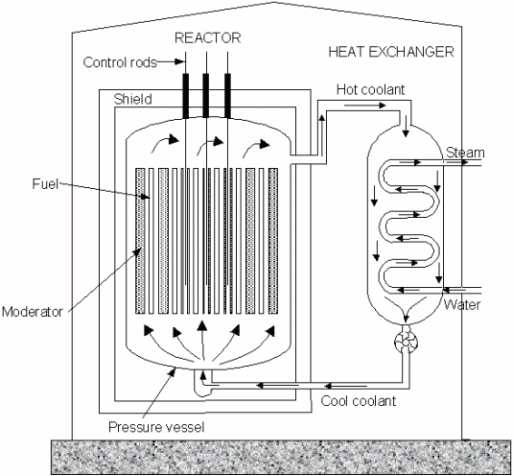The three major parts of the reactor part of the nuclear power station are the moderator, the control rods and the heat exchanger.

-
The moderator slows down neutrons produced in the decay of uranium nuclei. This makes it more likely that they will initiate the decay of other uranium nuclei on colliding with them.
-
The control rods control the rate at which nuclear reactions take. They are rods that can be moved into and out of the reactor core. The control rods absorbs neutrons, making them unavailable to initiate further reactions. To slow the reaction rate, they are moved into the reactor core, absorbing more neutrons, and to speed up the reaction they are moved out of the reactor core, to allow more neutrons to initiate reactions.
-
The heat exchanger allows the nuclear reactions to occur sealed off from the rest of the power station. The reactions increase the temperature in the reactor core. This thermal energy is used to heat water which is pumped through a heat exchanger, where it heats in an external circuit. This water turns to steam and the steam can be used to turn turbines to produce electricity.
